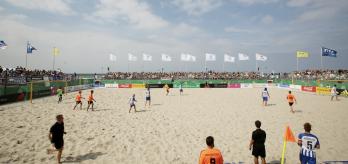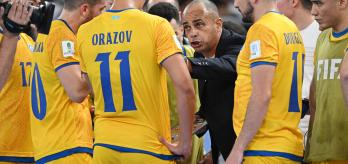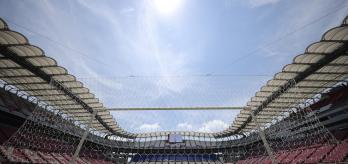Chapter 1: Introduction
Before training goalkeepers, it’s important to understand the various aspects of goalkeeping and its uniqueness as a specialised position. The introduction lays out these aspects and the traditional and ecological training approaches.
Chapter 2: Player development
As is the case with outfield players, a futsal goalkeeper’s development journey involves several phases. Initially, we should not expect young players (or their coaches) to place too much emphasis on specific positions on the pitch.
Chapter 3: Tactical and technical elements
Tactics and technique are both features of the game that coexist while being dependent and interdependent on one another. The tactical element is reflected in the intentions and behaviours that the futsal goalkeeper displays in each of their interventions, whereas the technical element is evident in the actions that the futsal goalkeeper performs.
Chapter 4: Tactical behaviours in possession
A futsal goalkeeper is heavily involved in a team’s in-possession play. This section outlines the core aspects of this phase of a goalkeeper’s game, helping them contribute to the team when with the ball.
Chapter 5: Tactical behaviours out of possession
When out of possession, the futsal goalkeeper’s tactical behaviours, actions and awareness are paramount and should be based on the principles of delay, deny and dictate. In the fifth chapter of the manual, readers can find detailed explanations of how to instil these behaviours in players.
Chapter 6: Defensive set-piece behaviour
Set pieces can provide the in-possession team with a significant advantage in some situations and at the very least, offer the opportunity to maintain possession. This section offers information on how to act when defending in these circumstances.
Chapter 7: Specific technique
Technique is understood as the technical actions that the goalkeeper performs to deal with a specific in-game situation. The technique adopted is the tool applied by the goalkeeper to deploy the tactical intention that the game demands at that particular moment in time.
Chapter 8: Technical actions in possession
The goalkeeper is the only player who can touch the ball with their hands inside the penalty area. When in possession, the goalkeeper may use the same technical tools as the outfield players and may keep possession of the ball for a maximum of four seconds inside their own half of the pitch.
Chapter 9: Technical actions out of possession
The goalkeeper spends a considerable amount of time during each game or training session out of possession, either as an individual or as a member of a wider team. It is this lack of involvement that requires the application of vital psychological engagement in readiness for regaining possession or involvement in defensive actions.
Chapter 10: Methodology
As the role of the goalkeeper and the significance of their involvement in build-up play and a team’s tactical approach has become more widely understood, a different approach to goalkeeper training has been required.
Chapter 11: Conclusion
The coach’s role is to help every futsal goalkeeper whom they work with to fulfil their potential. In the context of the developing player phase, the objective is to provide the goalkeeper with solid foundations that enable appropriate, complete and balanced development for the future.
Chapter 12: Session plans
This section of the manual provides readers with session plans, based on the methodology and principles outlined earlier. Session plans include detailed explanations, pitch graphics and links to corresponding videos on the FIFA Training Centre.











.variant64x64.png)

.variant348x164.png)






